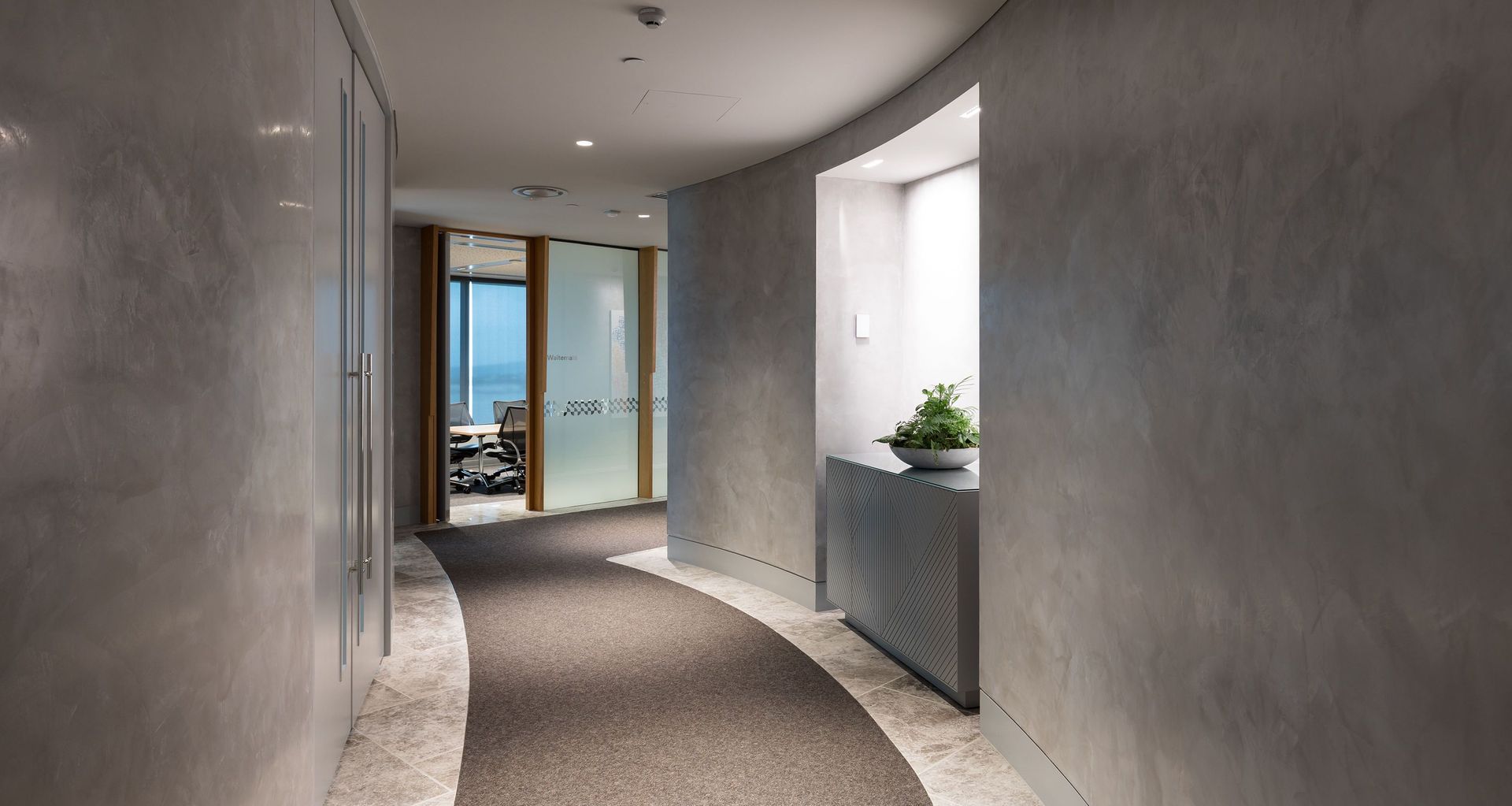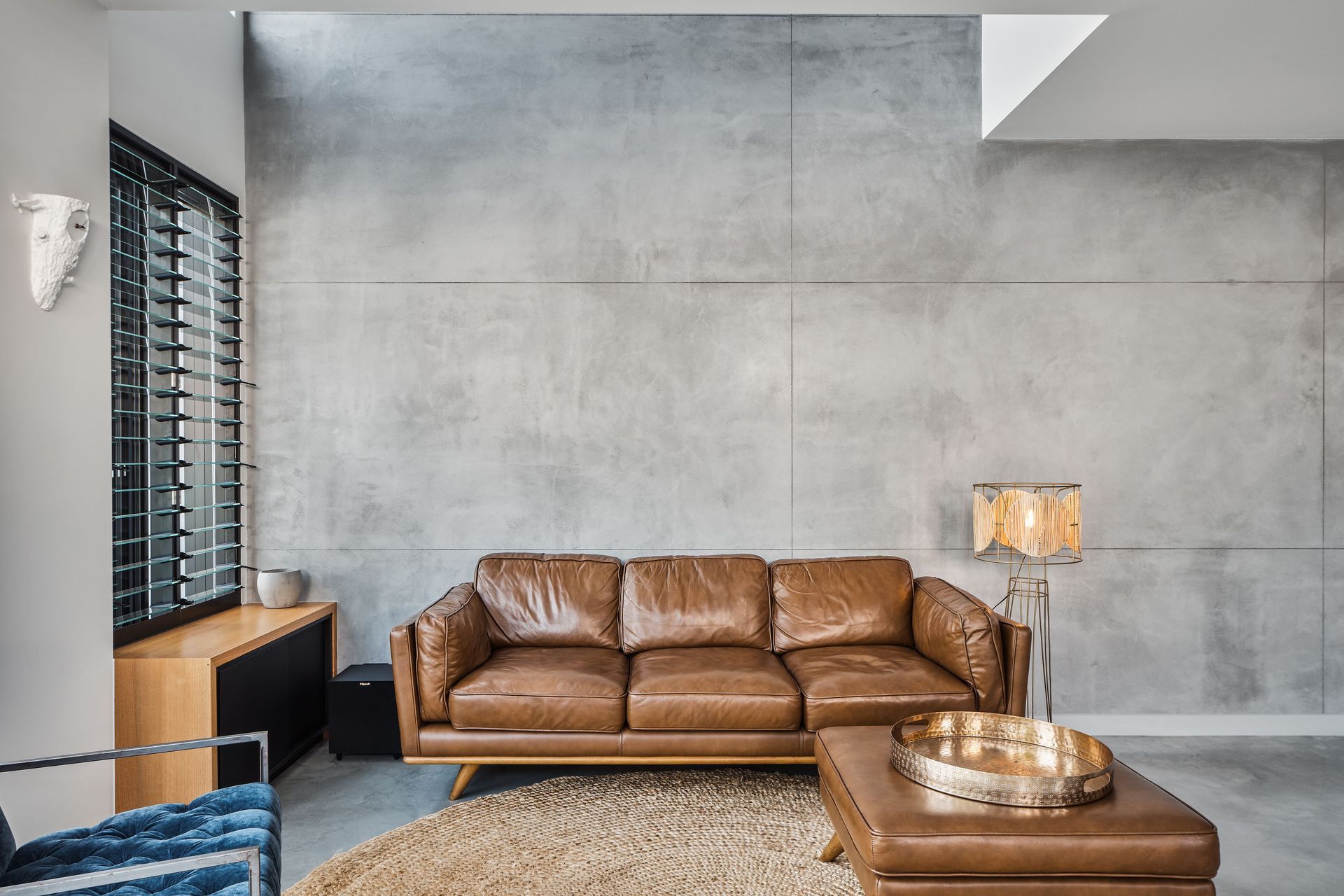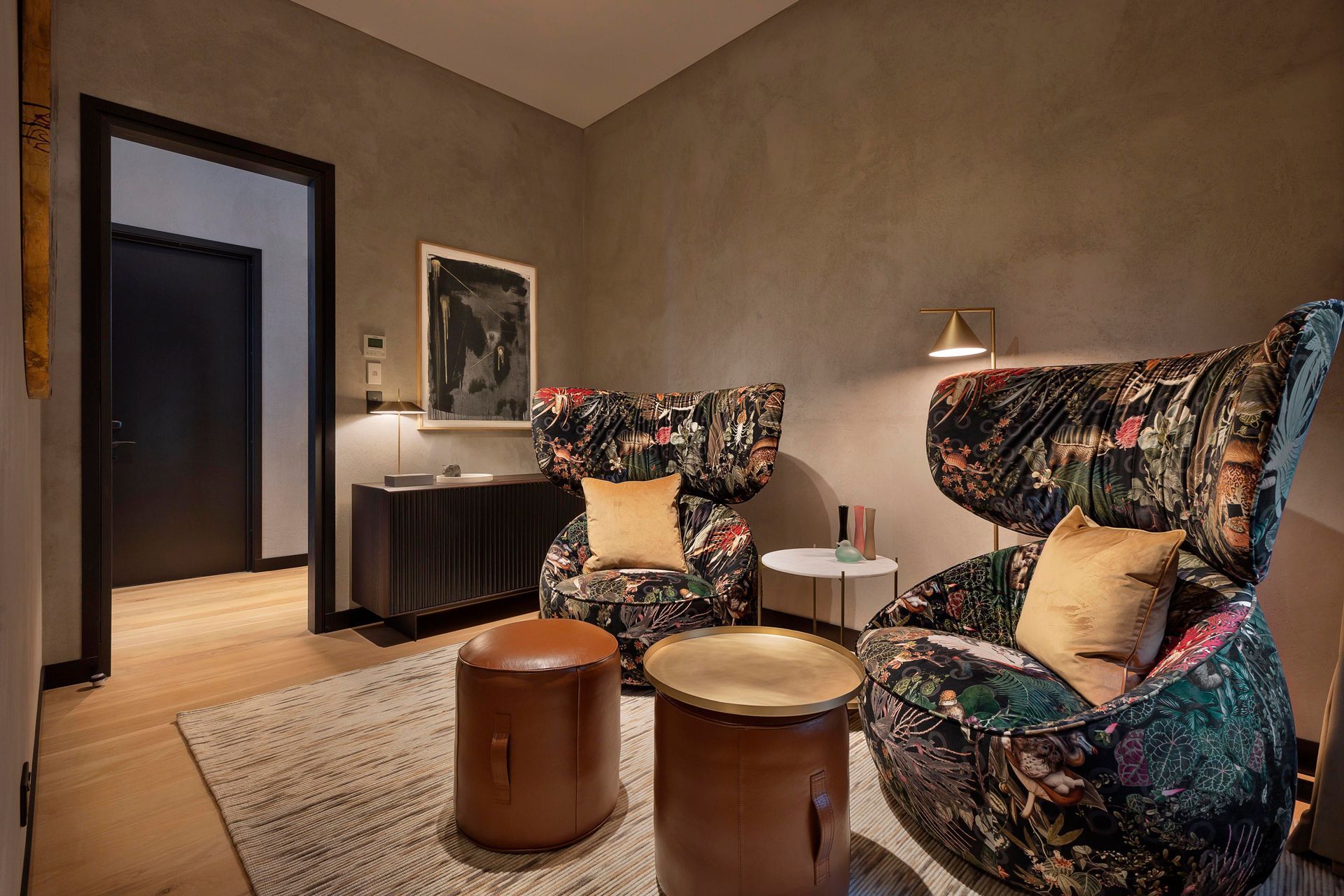Time-honoured surface finishes bring new life to modern interiors
Written by
20 April 2021
•
4 min read

Long before drywall-style products became the standard for creating true wall surfaces, people used different plasters made from natural materials such as lime, gypsum and even crushed marble to create durable and aesthetically pleasing interior and exterior walls.
One of the oldest trades in history is plastering, which, at it’s most basic meaning, was the skill to prepare surfaces and apply decorative and protective finishes to interiors and exteriors of buildings. In fact some of the earliest plaster compounds were devised by the ‘Ain Ghazal people of Jordan around 10,000 years ago and comprised a mixture of lime and crushed limestone, which was used for covering walls, floors and hearths.
Over time, plasters became more refined and more decorative, in turn skilled artisans were highly sought after for their ability in working with these products. While never truly falling out of fashion, the advent of the Industrial Revolution saw the time-intensive process of plastering increasingly replaced by more efficient, mass-produced walling systems.
However, in recent times, plastering has enjoyed somewhat of a renaissance, becoming once again, a highly prized interior finish for the residential and commercial markets, says Mike Olds, General Manager of Resene Construction Systems.
“The ROCKCOTE Natural Materials range of plaster finishes draws inspiration from nature to provide beautiful, natural interior finishes that require no further embellishment and which provide a durable and elegant surface.”

ROCKCOTE Natural Materials: from Africa to Asia via Europe
Many civilisations had their own formulation for plaster surfaces made from local materials, so it’s not surprising to find its use fairly widespread along ancient trading routes. In honour of these venerable cultures, a number of the ROCKCOTE Natural Materials products are named for them, says Mike.
“ROCKCOTE Marrakesh is based on the Morrocan tadelakt, which was originally used to waterproof earthen cisterns to allow water to be stored hygienically. However, it wasn’t long before tadelakt was also recognised for its aesthetic qualities and became a highly prized surface treatment in hammams and royal palaces.
"Marrakesh has been designed to emulate this very traditional and beautiful surface finish. If desired, it can also be tinted to a wide range of colours from within Resene’s The Range Whites & Neutrals collection, or as a custom colour.”
One of the best-known plaster finishes is Venetian plaster, highly prized for its luminously layered depth and highly polished finish, which lends a dramatic and luxurious feel to any interior.
“ROCKCOTE Venetian Plaster is a highly polished finish that commands attention with its illusion of depth and texture. Contemporary yet reminiscent of a traditional European stucco, Venetian Plaster delivers a truly opulent finish, equally at home in an architecturally designed home or a lavish hotel. It is also ideal for crafting the more industrial, polished concrete look so well suited to urban cafes and restaurants.”
The most popular offering within the range is Otsumigaki. Originating in Japan, and affectionately known as ‘Otsu’—which means polished and compressed—Otsumigaki is a plaster made of fine white clay, sands and lime and was used as an interior finish in traditional Japanese homes.
“Much like its namesake, the beauty of ROCKCOTE Otsumigaki lies in its ability to create textural depth with a smooth, flat surface, resulting in stunning, bespoke interiors that are durable, as well as beautiful to view and feel. Able to be tinted to a wide variety of colours, Otsumigaki can be used on interior residential and commercial surfaces such as entrances, stairwells and halls and delivers a smooth, luxurious surface with a pearl-like lustrous finish.”

ROCKCOTE Natural Materials: inspired by nature
“Augmenting our Marrakesh, Venetian and Otsumigaki products are our Velvetina and Clay Decor—which have been developed for customers seeking a high-end aesthetic from a natural, and sustainable perspective.
“More subtle than ROCKCOTE Venetian Plaster yet with harder drying characteristics than ROCKCOTE Otsumigaki, Velvetina produces a durable, hard-wearing finish with a serene, natural look. As a natural mineral material, Velvetina is a breathable surface finish and can be used on a wide variety of wall surfaces, including modern plasterboard and concrete, as well as traditional building materials, all with stunning results.
“Lastly, ROCKCOTE Clay Decor is the ideal choice for clients seeking a natural clay render for use in commercial or residential developments. Clay Decor plasters are porous, allowing the building structure to breathe. They also have a thirst for moisture that helps to regulate relative humidity, improving air quality and resisting mould growth.
As with all our Natural Material plaster finishes, Clay Decor has an inherent tactility and warmth that adds a stunning calming & natural aesthetic to any space.”
Learn more about the range of Rockcote interior plaster finishes for residential and commercial applications.
